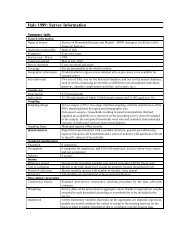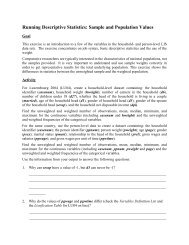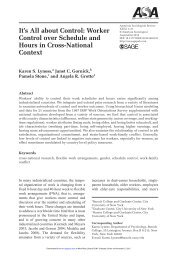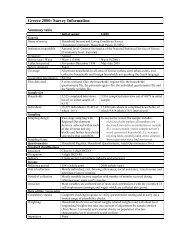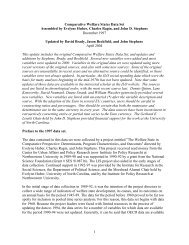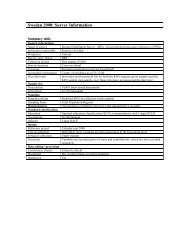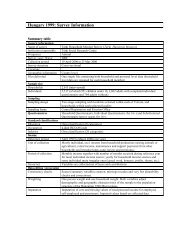Nicola Dickmann: - LIS
Nicola Dickmann: - LIS
Nicola Dickmann: - LIS
You also want an ePaper? Increase the reach of your titles
YUMPU automatically turns print PDFs into web optimized ePapers that Google loves.
The paper is organised as follows: After explaining the methodological background ofthe selected sample and the calculation with the data of the Luxembourg Income Study(<strong>LIS</strong>), the study analyses the correlation between income and fertility. Next aninvestigation of the economic situation of families in comparison to childless couples atthe very beginning of the 1980s is being conducted and compared with the data around1990 and 2000. The paper then looks for explanation of the observed differences, first incomparing the cash benefits to families across countries over time followed by a closerlook on the development of the personal income of family members. The paper endswith a brief discussion of the political implications of the findings.2 Methodological backgroundIn order to compare living standards of families and childless couples over time it wouldbe desirable to look back at the relevant figures after the active family phase has beenterminated. However, cohort related event data is not available at international level. Thestudy therefore uses panel data from the Luxembourg Income Study to compare livingstandards across six nations at three time points. 1 As the <strong>LIS</strong> is based on national paneldata, it is not possible to compare countries in exactly the same year. For the mediumtermperspective of this study, however, this does not represent any major restriction.The paper therefore compares the data of the USA, Canada, the United Kingdom,Germany, Sweden, and Finland using the surveys around 1980, 1990, and 2000. 2All national income figures have been transformed to international dollars in order toenable a better comparability, using the purchasing power parity concept of the WorldBank (The World Bank, 2001). The reasoning behind this concept are the defaults ofexchange rates in reflecting living standards across nations, as popularly documentedby the “Big-Mac-Index” of the magazine “The Economist”. This index compares theprices of a hamburger from the fast food company MacDonald’s around the world. As1 The samples do not content the same persons but people selected at random.2 The excact elicitation years are: Germany 1981, 1989, 2000. United Kingdom 1979, 1991, 1999. UnitedStates of America 1979, 1991, 2000. Canada 1981, 1991, 1998, Sweden 1981, 1992, 2000. Finland 1987,1991, 2000. Earlier data for Finland is not available, some tests with the surveys around 1980 thereforeexclude Finland.2



